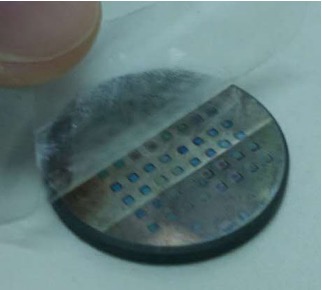High Throughput Synthesis the Infrared
Graded-index Antireflection Coatings
Bin Li1*, Ping Xie1, Weitao Su2,
Dingquan Liu1
1 Shanghai Institute of
Technical Physics, Chinese Academy of Sciences, Shanghai, 200083, China;
2 Hangzhou Dianzi University,
Hangzhou, Zhejiang Province, 310018, China
ABSTRACT: The lens and
windows in the optical system operating in the spectral range of thermal
infrared are commonly made of high-refractive-index materials, such as
germanium. As a consequence, the resulting Fresnel reflections at the medium to
their surface result into a lower net transmittance. For example, germanium
with an index of around 4.0 will produce a reflection loss of around 36% per
surface. Therefore, the broadband antireflection coatings are indispensable for
optical components in the thermal infrared. Although thorium fluoride (ThF4)
is an ideal mechanically stable infrared coating material with a low refractive
index, due to the detrimental property linked to its radioactivity, special
handling and strict disposal are required whenever it is used. Depending on
their structure, antireflection coatings can be classified as two types,
namely, composed of homogeneous layers and inhomogeneous layers.
The antireflection coatings with a single inhomogeneous layer are
shown advantageous with respect to omnidirectionality and broad-band behavior,
in which a refractive index gradient is created along thickness.
In our investigation, the combinatorial materials libraries were synthesized
of graded-index layers deposited from four rare-earth fluorides LaF3,
PrF3, ErF3 and SmF3, admixed with a different
amount of BaClF. FTIR
spectrometer under Hyperion microscope was used to
explore the antireflection characterization, EDX
was used to determine the stoichiometry, μ-XRD was used to explore the crystallographic structure and
trace phases, SIMS was used to in-depth chemical composition analyses.
Finally, the libraries were subjected to the durability tests, including water
solubility, adhesion and moderate abrasion, in accordance with the military
specification MIL-C-4847A in the United States. In Figure 1, the combinatorial
materials libraries were illustrated being subjected to the adhesion test.
It was demonstrated that the layers are robust enough to withstand
normal handling and environmental conditions, furthermore, the best
antireflection approach for the Ge surfaces can be achieved for the BaClF-LaF3
layer with a BaClF concentration x=0.51, through the high-throughput
characterization of the robustness and the spectral transmittance of the
elements in the libraries. Because the optimized characteristics of a Gaussian
index profile followed by a quintic-profile can be created in the layers, an
effective refractive index around 1.2 can be achieved, which is lower than
those of infrared low-index coating materials used commonly.

Keywords: High throughput synthesis; infrared; graded-index; antireflection
coatings.
